深度學習入門篇--手把手教你用 TensorFlow 訓練模型
歡迎大家前往騰訊雲技術社群,獲取更多騰訊海量技術實踐乾貨哦~
作者:付越
導語
Tensorflow在更新1.0版本之後多了很多新功能,其中放出了很多用tf框架寫的深度網路結構(https://github.com/tensorflow/models ),大大降低了開發難度,利用現成的網路結構,無論fine-tuning還是重新訓練方便了不少。最近筆者終於跑通TensorFlow Object Detection API的ssd_mobilenet_v1模型,這裡記錄下如何完整跑通資料準備到模型使用的整個過程,相信對自己和一些同學能有所幫助。
Object Detection API提供了5種網路結構的預訓練的權重,全部是用
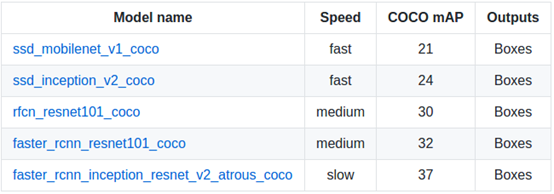
這裡TensorFlow的安裝就不再說明了,網上的教程一大把,大家可以找到很詳盡的安裝TensorFlow的文件。
訓練前準備:
使用protobuf來配置模型和訓練引數,所以API正常使用必須先編譯protobuf庫,這裡可以下載直接編譯好的pb庫(
$ cd tensorflow/models
$ protoc object_detection/protos/*.proto --python_out=.(我是把protoc加到環境變數中,遇到找不到*.proto檔案的報錯,後來把protoc.exe放到models/object_detection目錄下,重新執行才可以)
然後將models和slim(tf高階框架)加入python環境變數:
PYTHONPATH=$PYTHONPATH:/your/path/to/tensorflow/models 資料準備:
資料集需要轉化成PASCAL VOC結構,API提供了create_pascal_tf_record.py,把VOC結構資料集轉換成.record格式。不過我們發現更簡單的方式,Datitran提供一種更簡單生產.record格式的方法。
首先需要先要標註影象相應標籤,這裡可以使用labelImg工具。每標註一張樣本,即生成一個xml的標註檔案。然後,把這些標註的xml檔案,按訓練集與驗證集分別放置到兩個目錄下,在Datitran提供了xml_to_csv.py指令碼。這裡只要指定標註的目錄名即可。接下來,然後需要我們把對應的csv格式轉換成.record格式。

def main():
# image_path = os.path.join(os.getcwd(), 'annotations')
image_path = r'D:\training-sets\object-detection\sunglasses\label\test'
xml_df = xml_to_csv(image_path)
xml_df.to_csv('sunglasses_test_labels.csv', index=None)
print('Successfully converted xml to csv.')呼叫generate_tfrecord.py,注意要指定–csv_input與–output_path這兩個引數。執行下面命令:
python generate_tfrecord.py --csv_input=sunglasses_test_labels.csv --output_path=sunglass_test.record這樣就生成了訓練及驗證用的train.record與test.record。接下來指定標籤名稱,仿照models/ object_detection/data/ pet_label_map.pbtxt,重新建立一個檔案,指定標籤名。
item {
id: 1
name: 'sunglasses'
}訓練:
根據自己的需要,選擇一款用coco資料集預訓練的模型,把字首model.ckpt放置在待訓練的目錄,這裡meta檔案儲存了graph和metadata,ckpt儲存了網路的weights,這幾個檔案表示預訓練模型的初始狀態。
開啟ssd_mobilenet_v1_pets.config檔案,並做如下修改:
- num_classes:修改為自己的classes num
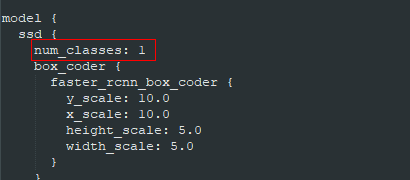
- 將所有PATH_TO_BE_CONFIGURED的地方修改為自己之前設定的路徑(共5處)
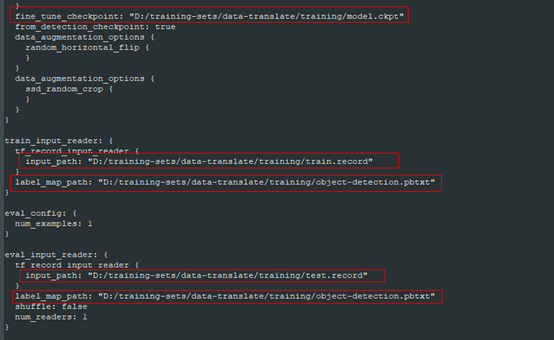
其他引數均保持預設引數。
準備好上述檔案後就可以直接呼叫train檔案進行訓練。
python object_detection/train.py \
--logtostderr \
--pipeline_config_path= D:/training-sets /data-translate/training/ssd_mobilenet_v1_pets.config \
--train_dir=D:/training-sets/data-translate/trainingTensorBoard監控:
通過tensorboard工具,可以監控訓練過程,輸入西面指令後,在瀏覽器輸入localhost:6006(預設)即可。
tensorboard --logdir= D:/training-sets/data-translate/training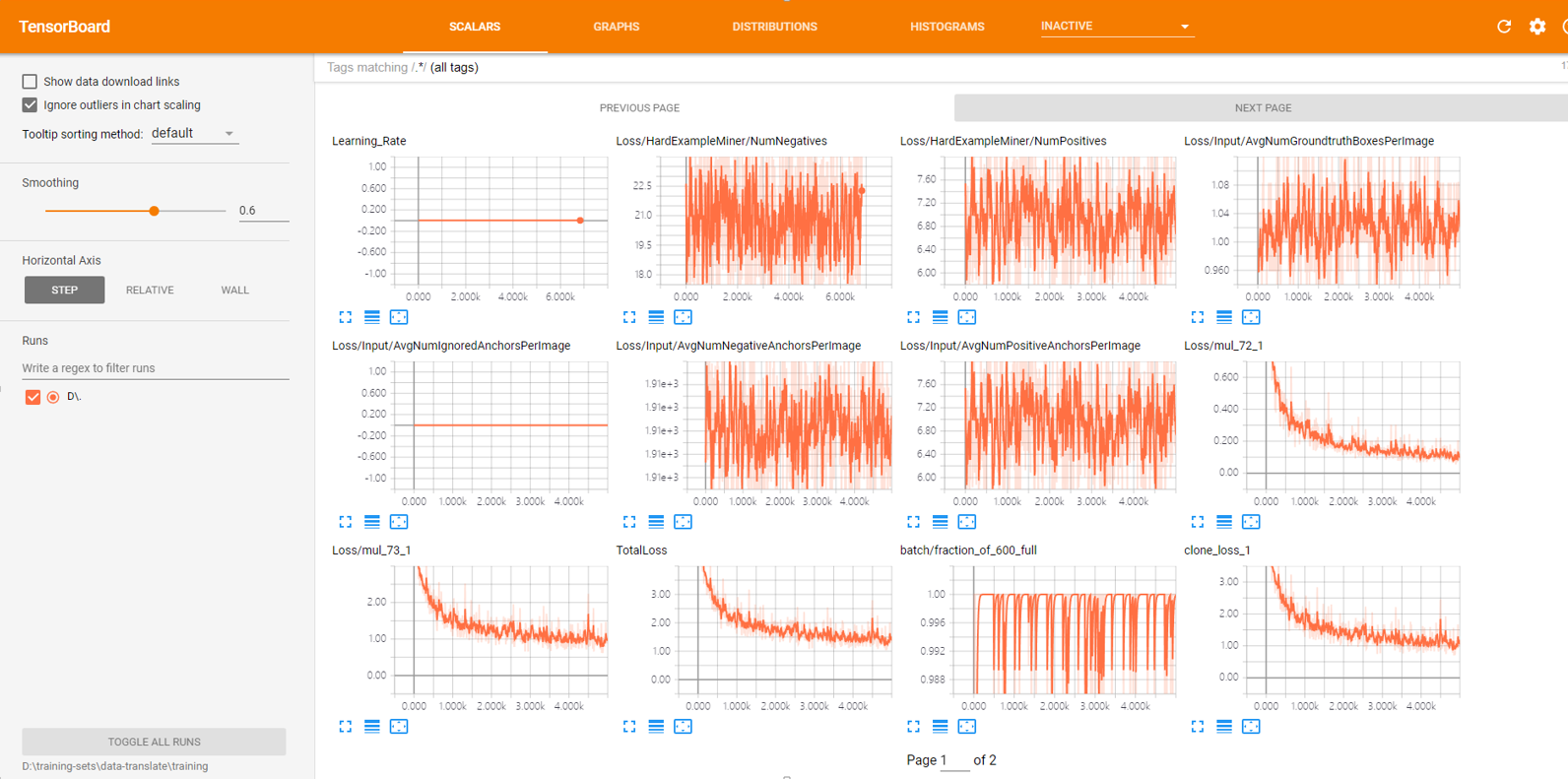
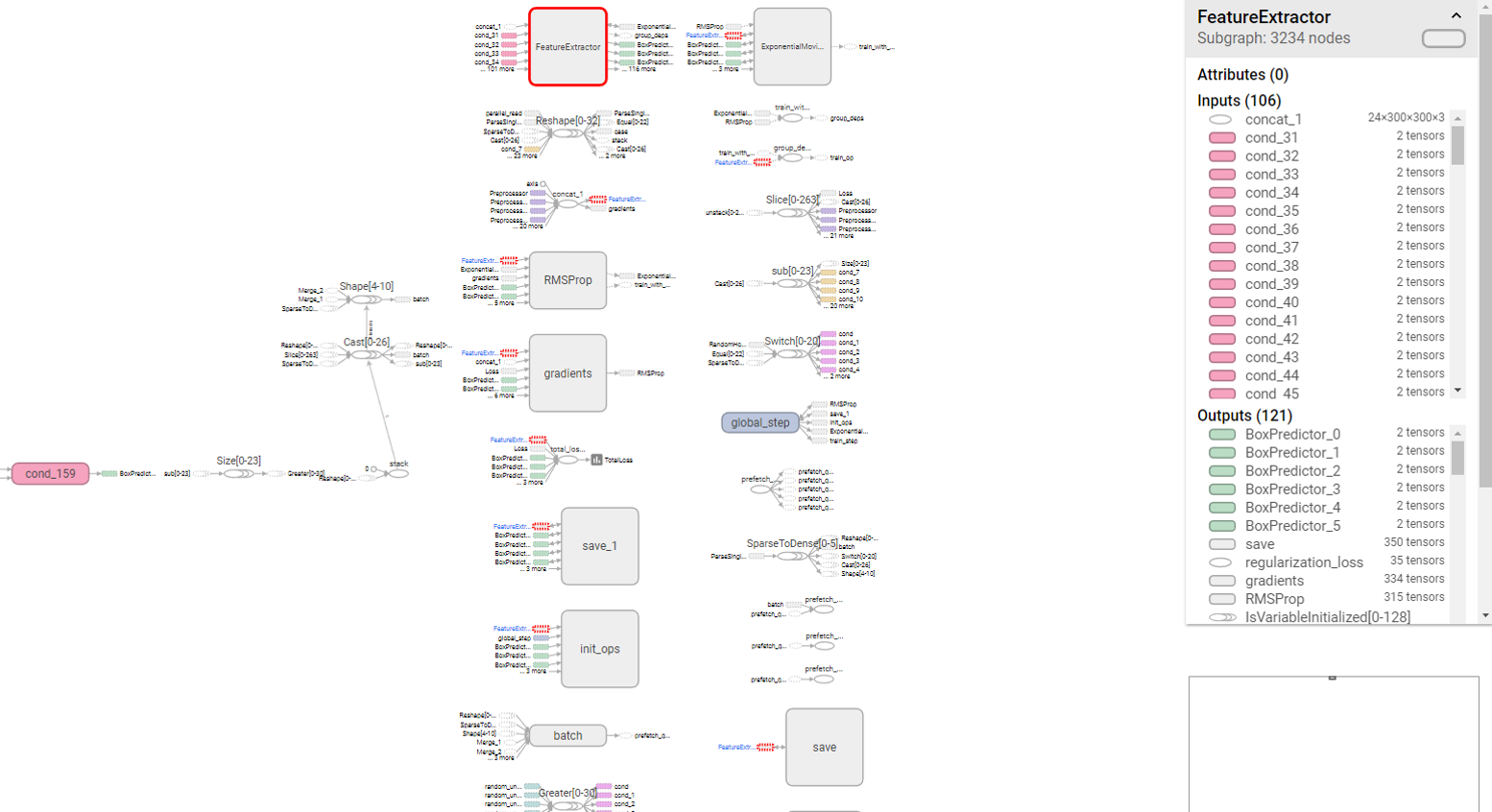
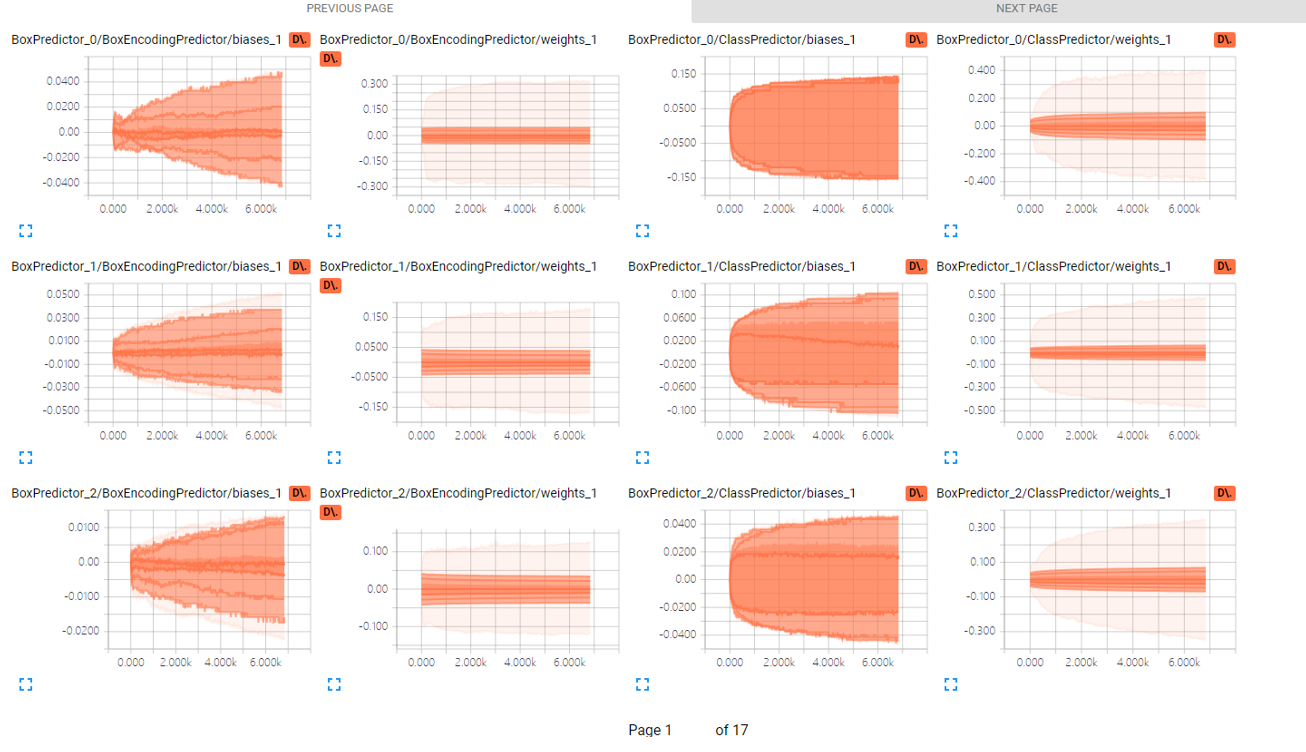
這裡面有很多指標曲線,甚至有模型網路架構,筆者對於這裡面很多指標含義還沒有弄明白,不過感覺出TensorBoard這個工具應該是極其強大。不過我們可以通過Total_Loss來看整體訓練的情況。

從整體上看,loss曲線確實是收斂的,整體的訓練效果還是滿意的。另外,TensorFlow還提供了訓練過程中利用驗證集驗證準確性的能力,但是筆者在呼叫時,仍有些問題,這裡暫時就不詳細說明了。
Freeze Model模型匯出:
檢視模型實際的效果前,我們需要把訓練的過程檔案匯出,生產.pb的模型檔案。本來,tensorflow/python/tools/freeze_graph.py提供了freeze model的api,但是需要提供輸出的final node names(一般是softmax之類的最後一層的啟用函式命名),而object detection api提供提供了預訓練好的網路,final node name並不好找,所以object_detection目錄下還提供了export_inference_graph.py。
python export_inference_graph.py \
--input_type image_tensor
--pipeline_config_path D:/training-sets /data-translate/training/ssd_mobilenet_v1_pets.config \
--trained_checkpoint_prefix D:/training-sets /data-translate/training/ssd_mobilenet_v1_pets.config /model.ckpt-* \
--output_directory D:/training-sets /data-translate/training/result匯出完成後,在output_directory下,會生成frozen_inference_graph.pb、model.ckpt.data-00000-of-00001、model.ckpt.meta、model.ckpt.data檔案。
呼叫生成模型:
目錄下本身有一個呼叫的例子,稍微改造如下:
import cv2
import numpy as np
import tensorflow as tf
from object_detection.utils import label_map_util
from object_detection.utils import visualization_utils as vis_util
class TOD(object):
def __init__(self):
self.PATH_TO_CKPT = r'D:\lib\tf-model\models-master\object_detection\training\frozen_inference_graph.pb'
self.PATH_TO_LABELS = r'D:\lib\tf-model\models-master\object_detection\training\sunglasses_label_map.pbtxt'
self.NUM_CLASSES = 1
self.detection_graph = self._load_model()
self.category_index = self._load_label_map()
def _load_model(self):
detection_graph = tf.Graph()
with detection_graph.as_default():
od_graph_def = tf.GraphDef()
with tf.gfile.GFile(self.PATH_TO_CKPT, 'rb') as fid:
serialized_graph = fid.read()
od_graph_def.ParseFromString(serialized_graph)
tf.import_graph_def(od_graph_def, name='')
return detection_graph
def _load_label_map(self):
label_map = label_map_util.load_labelmap(self.PATH_TO_LABELS)
categories = label_map_util.convert_label_map_to_categories(label_map,
max_num_classes=self.NUM_CLASSES,
use_display_name=True)
category_index = label_map_util.create_category_index(categories)
return category_index
def detect(self, image):
with self.detection_graph.as_default():
with tf.Session(graph=self.detection_graph) as sess:
# Expand dimensions since the model expects images to have shape: [1, None, None, 3]
image_np_expanded = np.expand_dims(image, axis=0)
image_tensor = self.detection_graph.get_tensor_by_name('image_tensor:0')
boxes = self.detection_graph.get_tensor_by_name('detection_boxes:0')
scores = self.detection_graph.get_tensor_by_name('detection_scores:0')
classes = self.detection_graph.get_tensor_by_name('detection_classes:0')
num_detections = self.detection_graph.get_tensor_by_name('num_detections:0')
# Actual detection.
(boxes, scores, classes, num_detections) = sess.run(
[boxes, scores, classes, num_detections],
feed_dict={image_tensor: image_np_expanded})
# Visualization of the results of a detection.
vis_util.visualize_boxes_and_labels_on_image_array(
image,
np.squeeze(boxes),
np.squeeze(classes).astype(np.int32),
np.squeeze(scores),
self.category_index,
use_normalized_coordinates=True,
line_thickness=8)
cv2.namedWindow("detection", cv2.WINDOW_NORMAL)
cv2.imshow("detection", image)
cv2.waitKey(0)
if __name__ == '__main__':
image = cv2.imread('image.jpg')
detecotr = TOD()
detecotr.detect(image)下面是一些圖片的識別效果:
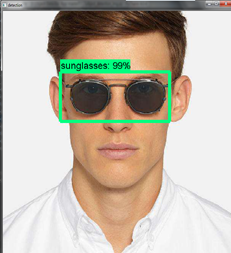
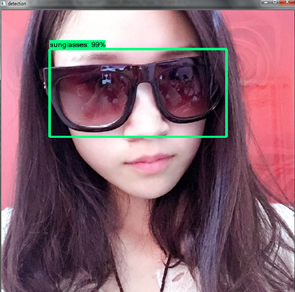

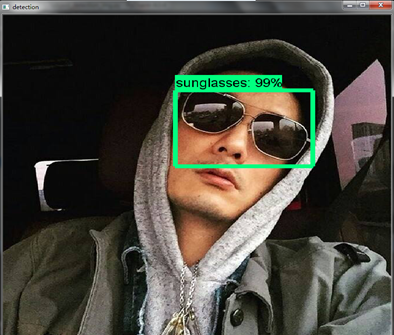
相關閱讀
此文已由作者授權騰訊雲技術社群釋出,轉載請註明文章出處
